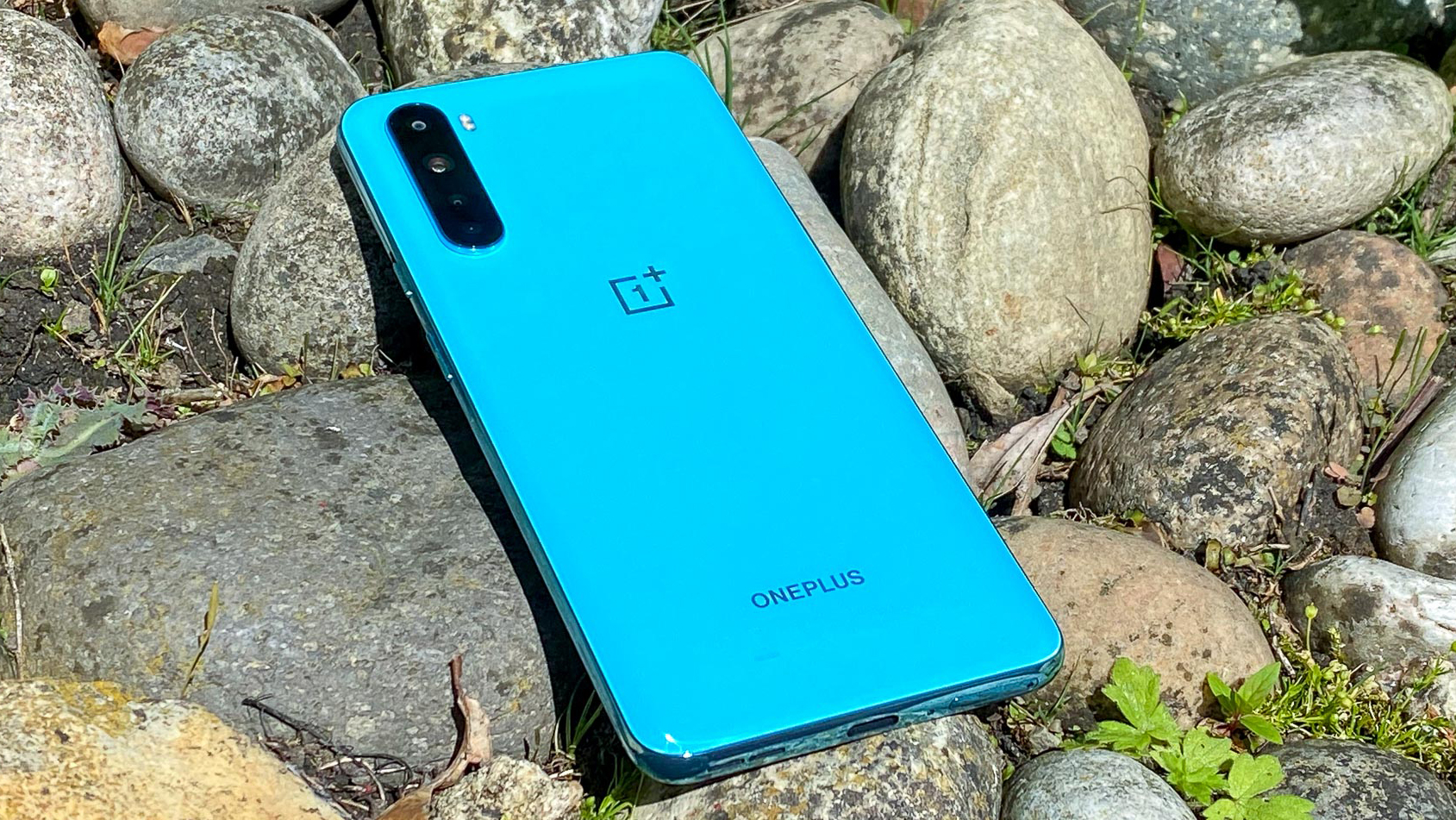OnePlus is losing exactly what made it special
With too many phones, OnePlus is just another phone maker now

OnePlus has come a very long way in a short space of time. Seven years ago, the phone maker didn’t exist, and these days, it’s one of the most popular phone brands in the world, even if that level of popularity depends on which country you’re in and who you’re talking to.
OnePlus got to this point by sticking to a single phone at a time, taking on board community feedback in the wake of negative reception to early releases like the OnePlus 2 and OnePlus X. Even after kicking off a biannual launch pattern with the numbered and “T series” devices, OnePlus was always a one phone company. Until it wasn’t.
- OnePlus Nord N10 5G review: Premium features for an affordable price
- OnePlus 8T review: Too little for too much
Last year saw the launch of the OnePlus 7 series, with heavy emphasis on the term “series.” That’s because the OnePlus 7 Pro came along for the ride as well, with the larger phone offering better and more powerful features than the smaller OnePlus 7 – and a price tag to match. It’s now 18 months after that launch, and the number of OnePlus phones on sale has risen from two to six, if you also include the OnePlus 8, which remains available even after the arrival of its successor, the OnePlus 8T.
So what changed? OnePlus has decided it wasn’t content with its flagship success, and decided to muscle into the mid-range and budget phone markets with the OnePlus Nord series. And this is where OnePlus has started losing its way.
The trouble with the OnePlus Nord
Arguably the success of OnePlus can be attributed to a combination of its focus to offer a great flagship experience for a not-so flagship price, while also taking on feedback from its community to see what’s working and what’s not. That’s going to become a lot harder with the rapid release schedule we’ve seen from the Nord phones, while also making life more confusing for the people who aren’t completely obsessed with the brand.
The trouble really started in the aftermath of the launch of the OnePlus Nord. On its own launching that phone was a smart move for OnePlus. Not only did it open up the brand to customers who don’t have the money for a flagship, but its flagship features made the £379 phone stand out in an already-saturated mid-range market. Plus one extra phone on sale doesn’t really make much difference, especially considering there were only two other OnePlus phones on sale at the time.
But the Nord never made it to North America, with OnePlus restricting its sale to Europe and India. Why the Nord never made it across the Atlantic was never made clear, though speculation suggests that the carrier-centric distribution model popular in the U.S. didn’t really work with the Nord’s small profit margins.
Sign up to get the BEST of Tom's Guide direct to your inbox.
Get instant access to breaking news, the hottest reviews, great deals and helpful tips.
More OnePlus Nord models on the way
Then we started hearing about a new Nord that would come to North America, albeit with a few more hardware caveats attached. A lesser chipset, not as many fancy features, and so on. The problem was this phone wasn’t just a “U.S. Nord variant”, it was an entirely new phone that would also go on sale elsewhere. Pre-orders for the OnePlus Nord N10G begin Nov. 14 in the UK with the phone launching Nov. 27. A US launch will follow. An additional OnePlus Nord model, the OnePlus Nord N100, is available for pre-order in the UK now.
Unlike the N100, which is distinctively a different phone in everything but name, at a glance there’s not a lot differentiating the Nord and the N10. They have a similar name, similar price (£379 vs £329), and specs that are different but also weirdly similar. You couldn’t even definitively say that the N10 is worse than the Nord, because in some instances it’s not. Rear camera resolution and battery capacity are all larger than its predecessor, even if it has a slower processor and less RAM.
The naming conventions don’t really help either. It’s easy to get your head round the fact that OnePlus Nord is the brand name, even if that’s also the name of the original phone. But adding things like N10 5G or N100 isn’t going to help people differentiate between the three devices – especially since they’ve been released in such close succession.
If OnePlus had used adjectives in its phone names, then this conversation might not even be happening. It’s easy to differentiate the OnePlus 7 and the 7 Pro, because the latter is the Pro/better model. Had the N10 been the OnePlus Nord Lite, or the N100 the OnePlus Nord Mini, then the models are instantly distinguishable without having to memorise a string of extra characters.
Too many phones
At this point, you have to wonder what sort of phone company OnePlus wants to be. It makes sense for a company to want to diversify its product range, but there is such a thing as too much choice —particularly when there isn’t much to differentiate those choices in the eyes of the casual phone user.
While offering more options sounds like a great idea on paper, in practice it doesn’t quite work, especially if there’s not any discernible difference between your different phones. People aren’t going to be that interested in a new phone model if they can’t immediately tell whether it’s better than a different model, and they’re not going to invest a lot of time picking over minute details . There’s a reason why most companies, including OnePlus stick to an ascending numerical naming system after all.
But Nord, Nord N10, and N100? There’s no logic there. Having a single phone out with a weird name is one thing, but having several that are already difficult to distinguish is just exacerbating a problem that really didn’t need to exist in the first place.
You also have to consider that phone companies, as a rule, don’t try and spread their focus over the entire market. Apple is, and always has been, about the premium phone experience, and that worked astronomically well for them. Meanwhile Samsung offers mid-range and budget handsets as more of a side gig, since it’s always completely dedicated to pushing people towards the flagship Galaxy S and Note ranges.
Then you have the Nokias and the Motorolas of the world, who don’t usually even bother going for the premium end of the market. Instead they dedicate their efforts offering a lot of choice, and selling good phones for low prices. If that last bit sounds familiar, it’s because that’s what OnePlus said it wanted to do with the Nord range.
OnePlus could jump in and surprise us by juggling all those different goals at the same time, but we’ve already seen the flagship get neglected thanks to this lack of focus. The OnePlus 8T, by most accounts, wasn’t very impressive. In our OnePlus 8T review, we commented on how the phone offers far too little, with disappointing camera results and a complete absence of wireless charging. It’s a big blow, and it’s one that could have been cushioned if there had been an 8T Pro to offer a phone with a little bit extra.
It’s not clear why the 8T Pro isn’t coming, but the timing is suspicious. The OnePlus 8T launch came between the releases of OnePlus Nord and Nord N10 5G, and while we can’t know for certain, it certainly feels like the 8T Pro may have been sacrificed in favor of promoting the Nord range. For a company that built up its reputation as the “flagship buster,” suddenly neglecting the flagship range isn’t going to go over very well with the fans. Fans that, by and large, made OnePlus the company that it is.
The outlook for OnePlus
The more a flagship gets neglected, the faster it falls further behind as the mid-range models catch up. Especially with mid-range models that have the Nord’s weird mix of premium features. Frankly that’s only going to make this whole situation worse.
OnePlus needs to stop for a minute and figure out what kind of company it needs to be. Does it want to try to dominate across the market, or refocus its efforts onto cheaper devices? If the latter, the company needs to be smarter about how’s it going about things, rather than throwing phones at people and hoping some of them get caught.

Tom is the Tom's Guide's UK Phones Editor, tackling the latest smartphone news and vocally expressing his opinions about upcoming features or changes. It's long way from his days as editor of Gizmodo UK, when pretty much everything was on the table. He’s usually found trying to squeeze another giant Lego set onto the shelf, draining very large cups of coffee, or complaining about how terrible his Smart TV is.
